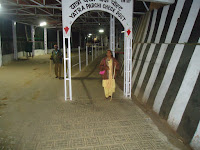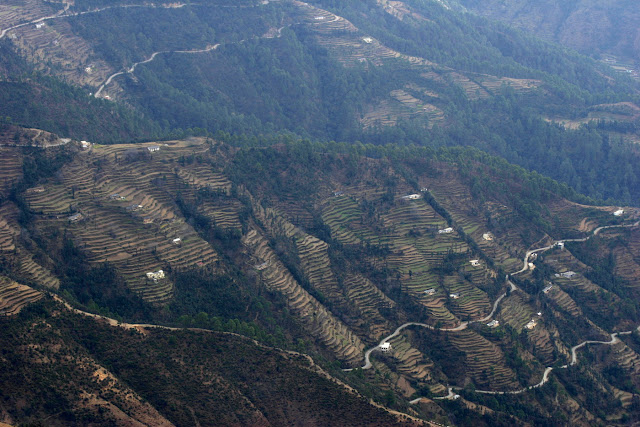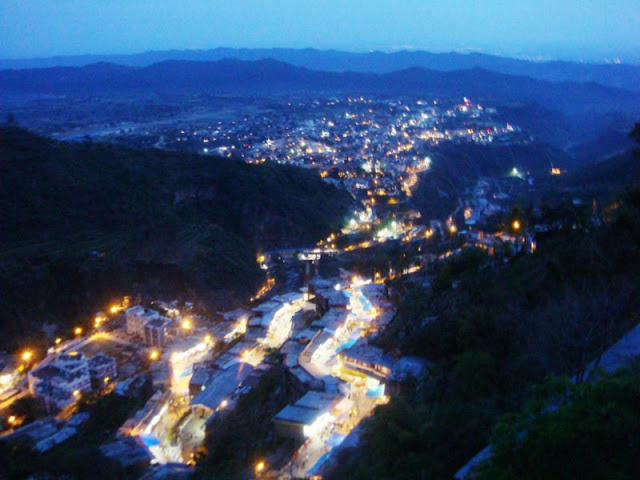NAMGYAL TSEMO GOMPA
LEH DISTRICT
Jammu and Kashmir
HEAVEN ON EARTH
The gompa was established by King Tashi Namgyal in 1430 AD who was a major adherent of Buddhism. As a sign of his appreciation to Buddhism, the ruler fabricated the religious community over his royal residence. situated on the precipice of Namgyal slope, its architecture is impressive.
Established in the mid-fifteenth century, Namgyal Tsemo religious community in Leh in Ladakh is eminent for its three-story-high strong gold symbol of Maitreya Buddha. Arranged on a peak behind the Leh royal residence, the cloister offers all-encompassing perspectives of the encompassing wide open, the delicately streaming Indus waterway and the snowcapped crests of Zanskar reach.
The perspective of Leh from the gompa is amazing as the perspective changes with the light. The cloister is a most loved with picture takers as well.


Down the slope side, there is Shankar gompa which is additionally connected with Namgyal Tsemo cloister. It is an everyday custom took after by friars from Shankar gompa to love Buddha and light margarine lights at Namgyal Tsemo. Guests are permitted into the cloister just a mid morning and night.
The nine-story-high Namgyal Tsemo castle is additionally one of the real attractions. The castle offers all-encompassing perspectives of the encompassing wide open, particularly old Ladakh.Leh is famous for handwoven rugs, carpet and shawls. Ladakhi jewellery, Buddhist artifacts, including prayer wheel, masks and Thangkas are worth a buy.







Namgyal Tsemo Monastery of Leh Ladakh offers stunningly delightful perspectives of the town of Leh. There is additionally a post close to the religious community, in any case, now it stands generally in remains. There are various related sanctuaries likewise, which stay open just a mid morning and night. Amid, this time, a friar originates from Sankar Gompa to take care of the margarine lights before the pictures.

Unmistakable from a remote place with its particular block red shading, Namgyal Tsemo Gompa, a lovely, tranquil fifteenth-century religious community, lies further up the Tsemo slope past Leh Palace. Scaling the lofty way worn throughout the years into the rough mountain, the Namgyal Tsemo Gompa invites you in its quiet, profound folds.

Celebrated internationally for the gold overlaid statue of Maitreya Buddha, otherwise called Future Buddha who is to take after recorded Buddha Sukyamani, the religious community has since a long time ago tricked explorers looking for Buddhist encounter just to shock them with something startling the stunning perspective of the field of Leh's scene. Worked by King Tashi Namgyal after the intrusion of Nubra Valley by Mirza Heder in 1531, Namgyal Tsemo was verifiably devoted to the gatekeeper gods who might pound every single wickedness soul and keep any further assault on Namgyal line. Today, the gatekeeper gods live in the religious community's Gong Kang and the rippling Tibetan petition to God banners in and around the cloister loan their own particular profound rhythm.

Established in the mid-fifteenth century, Namgyal Tsemo religious community in Leh in Ladakh is eminent for its three-story-high strong gold symbol of Maitreya Buddha. Arranged on a peak behind the Leh royal residence, the cloister offers all-encompassing perspectives of the encompassing wide open, the delicately streaming Indus waterway and the snowcapped crests of Zanskar reach.
The perspective of Leh from the gompa is amazing as the perspective changes with the light. The cloister is a most loved with picture takers as well.
The gompa has gathering lobby and sanctuary with frescoes, works of art and statues of Buddhas. The gold icon of Maitreya Buddha (future Buddha) is three-story high. The religious community is likewise noted for one-story high statues of Avalokitesvara and Manjushri.


Down the slope side, there is Shankar gompa which is additionally connected with Namgyal Tsemo cloister. It is an everyday custom took after by friars from Shankar gompa to love Buddha and light margarine lights at Namgyal Tsemo. Guests are permitted into the cloister just a mid morning and night.
The nine-story-high Namgyal Tsemo castle is additionally one of the real attractions. The castle offers all-encompassing perspectives of the encompassing wide open, particularly old Ladakh.Leh is famous for handwoven rugs, carpet and shawls. Ladakhi jewellery, Buddhist artifacts, including prayer wheel, masks and Thangkas are worth a buy.






Overlooking the town of Leh, the Namgyal Tsemo Gompa stands perched precariously on the crag behind Leh palace. Built by King Tashi Namgyal, it dates back to the year 1430. Namgyal Tsemo Gompa at Ladakh houses a three-story high solid gold idol of Maitreya Buddha (future Buddha, also known as the laughing Buddha). Also, present inside is a statue of Avalokitesvara and Manjushri, approximately one story high, along with numerous manuscripts and frescoes.

Namgyal Tsemo Monastery of Leh Ladakh offers stunningly delightful perspectives of the town of Leh. There is additionally a post close to the religious community, in any case, now it stands generally in remains. There are various related sanctuaries likewise, which stay open just a mid morning and night. Amid, this time, a friar originates from Sankar Gompa to take care of the margarine lights before the pictures.

Unmistakable from a remote place with its particular block red shading, Namgyal Tsemo Gompa, a lovely, tranquil fifteenth-century religious community, lies further up the Tsemo slope past Leh Palace. Scaling the lofty way worn throughout the years into the rough mountain, the Namgyal Tsemo Gompa invites you in its quiet, profound folds.

Celebrated internationally for the gold overlaid statue of Maitreya Buddha, otherwise called Future Buddha who is to take after recorded Buddha Sukyamani, the religious community has since a long time ago tricked explorers looking for Buddhist encounter just to shock them with something startling the stunning perspective of the field of Leh's scene. Worked by King Tashi Namgyal after the intrusion of Nubra Valley by Mirza Heder in 1531, Namgyal Tsemo was verifiably devoted to the gatekeeper gods who might pound every single wickedness soul and keep any further assault on Namgyal line. Today, the gatekeeper gods live in the religious community's Gong Kang and the rippling Tibetan petition to God banners in and around the cloister loan their own particular profound rhythm.












































